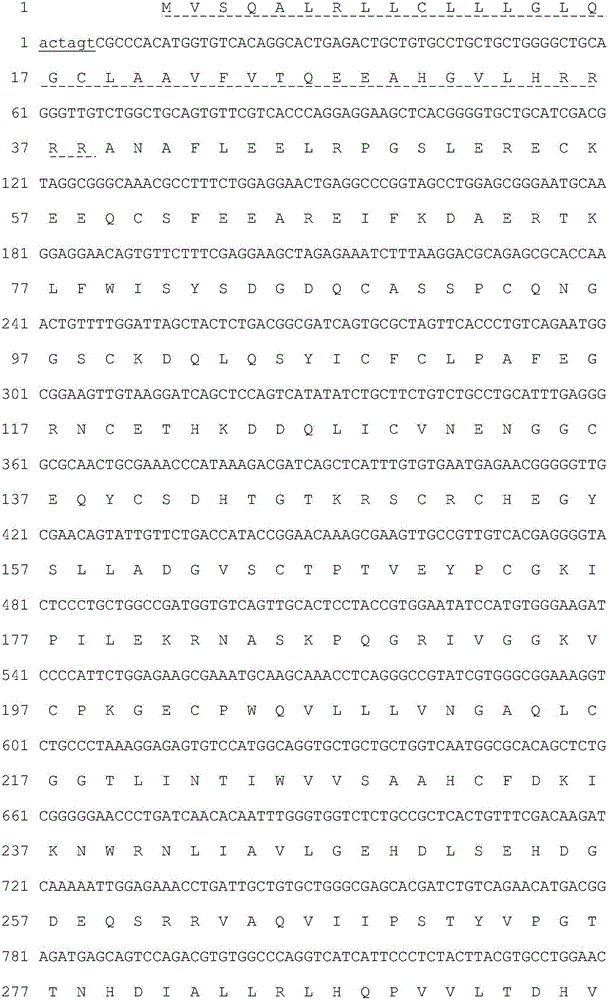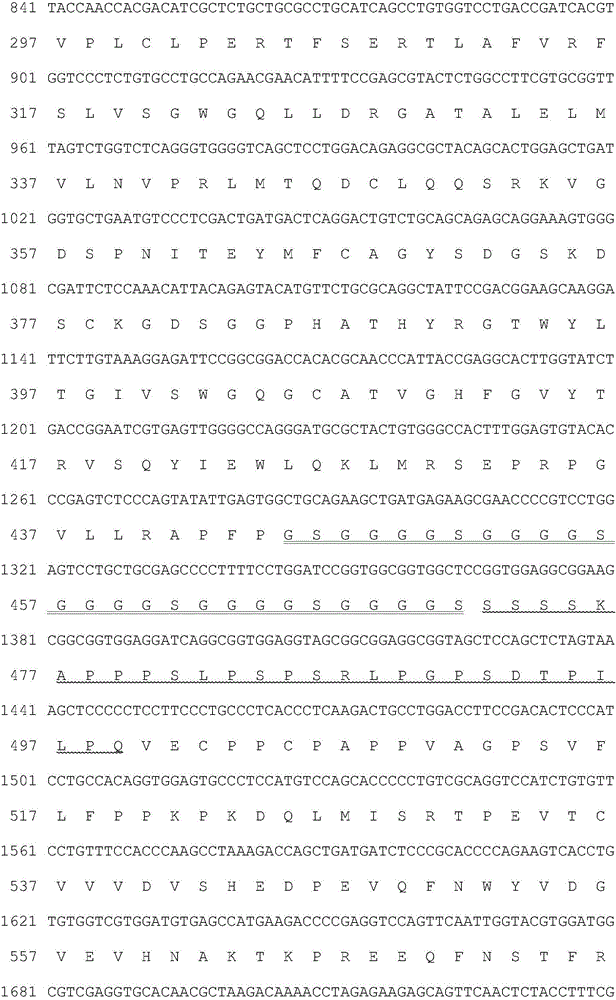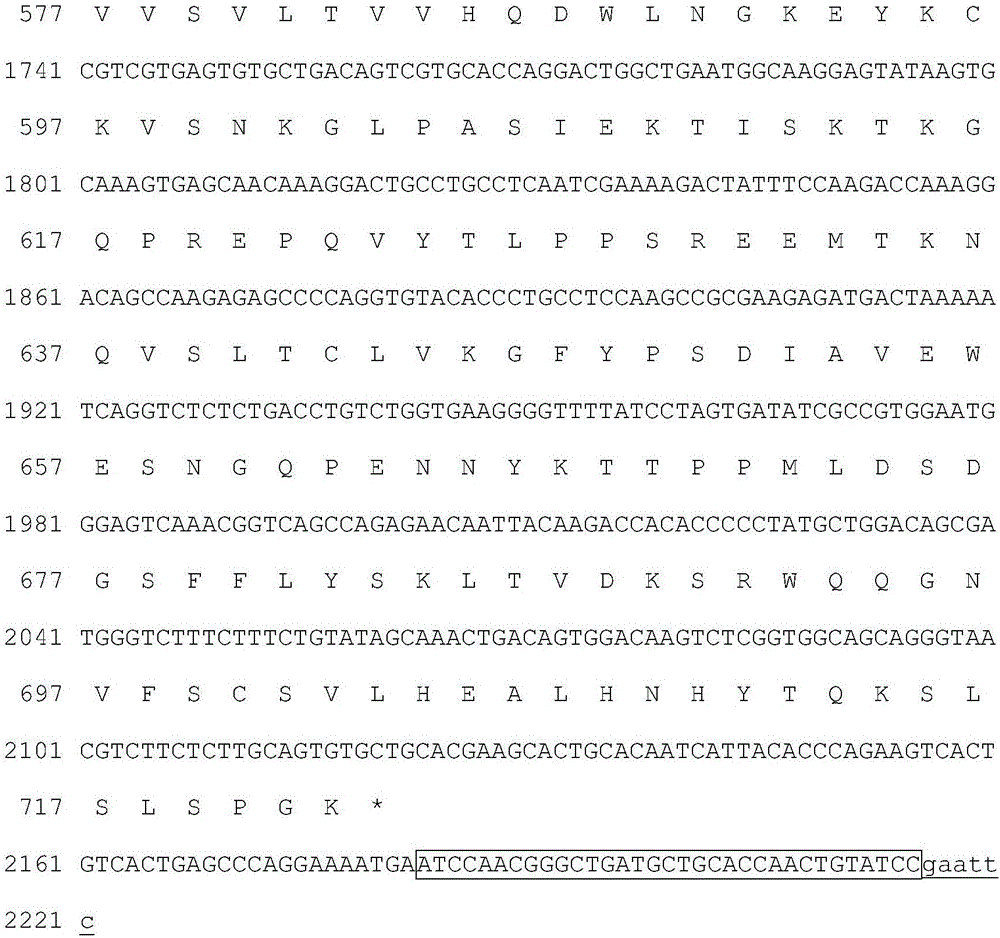Activated human coagulation factor VII fusion protein and preparation method and application thereof
A technology of human blood coagulation factor and fusion protein, which is applied in the field of activated human blood coagulation factor VII fusion protein and its preparation, and preparation of drugs for the treatment of various blood coagulation related diseases. Limited and other issues
- Summary
- Abstract
- Description
- Claims
- Application Information
AI Technical Summary
Problems solved by technology
Method used
Image
Examples
Embodiment 1
[0114] Example 1. Construction of expression plasmids encoding FVII fusion proteins
[0115] The gene sequences encoding FVII leader peptide, mature protein, flexible peptide linker, CTP rigid unit and human IgG vFc variant are artificially optimized codons preferred by CHO cells and obtained by artificial synthesis. The 5' and 3' ends of the full-length DNA fragment of the synthesized fusion protein each have a restriction enzyme endonuclease site, respectively SpeI and EcoRI, and the full-length DNA fragment is inserted between the corresponding restriction enzyme sites of the pUC57 transfer vector. DNA sequencing verified the sequence. Then transfer the full-length gene fragment of the fusion protein obtained above from the intermediate vector to between the SpeI (5') and EcoRI (3') sites of the transformed expression plasmid PTY1A1 using PCDNA3.1 as a template to obtain a fusion protein with a high expression plasmid. The PTY1A1 plasmid includes but is not limited to the...
Embodiment 2
[0119] Example 2. Transient expression of each fusion protein and activity assay
[0120] With 8 kinds of expression plasmids that embodiment 1 obtains, use DNAFect LT reagent in the shaking flask of 30ml TM (ATGCell company) transfection 3×10 7 In CHO-K1 cells, the transfected cells were grown for 5 days in a serum-free growth medium containing 1000ng / ml vitamin K1, and the concentration of the fusion protein in the supernatant was determined, and the method described in Example 7 or 8 was used to determine its concentration. active. The results of ELISA showed that the transient expression levels (amounts of substances) of the eight plasmids were similar under this condition, but their blood coagulation activities showed great differences. Among them, we defined the molar specific activity of FP-A as 100%. The fusion protein supernatants expressed by FP-F, FP-G and FP-H plasmids had low activities, only 29.4%, 26.3% and 41.2% of FP-A, and the purified proteins were analyz...
Embodiment 3
[0121] Example 3. Screening for stable transfected cell lines expressing fusion proteins
[0122]The above expression plasmids of FP-A, FP-B, FP-C, FP-D and FP-E were transfected into a mammalian host cell line to express the FVII fusion protein. In order to maintain stable high-level expression, the preferred host cells are DHFR-deficient CHO cells (US Patent No. 4818679). A preferred method of transfection is electroporation, although other methods including calcium phosphate co-sedimentation, lipofection, and microinjection can also be used. The electroporation method uses a GenePulser Electroporator (Bio-Rad Laboratories Company) set at a voltage of 300V and a capacitance of 1050μFd, and places 2 to 3×10 cells in a cuvette. 7 50 μg PvuI linearized expression plasmid was added to each cell, and the electroporated cells were transferred to a shake flask containing 30 ml growth medium. Two days after transfection, the medium was replaced with a growth medium containing 0.6m...
PUM
 Login to View More
Login to View More Abstract
Description
Claims
Application Information
 Login to View More
Login to View More - Generate Ideas
- Intellectual Property
- Life Sciences
- Materials
- Tech Scout
- Unparalleled Data Quality
- Higher Quality Content
- 60% Fewer Hallucinations
Browse by: Latest US Patents, China's latest patents, Technical Efficacy Thesaurus, Application Domain, Technology Topic, Popular Technical Reports.
© 2025 PatSnap. All rights reserved.Legal|Privacy policy|Modern Slavery Act Transparency Statement|Sitemap|About US| Contact US: help@patsnap.com



